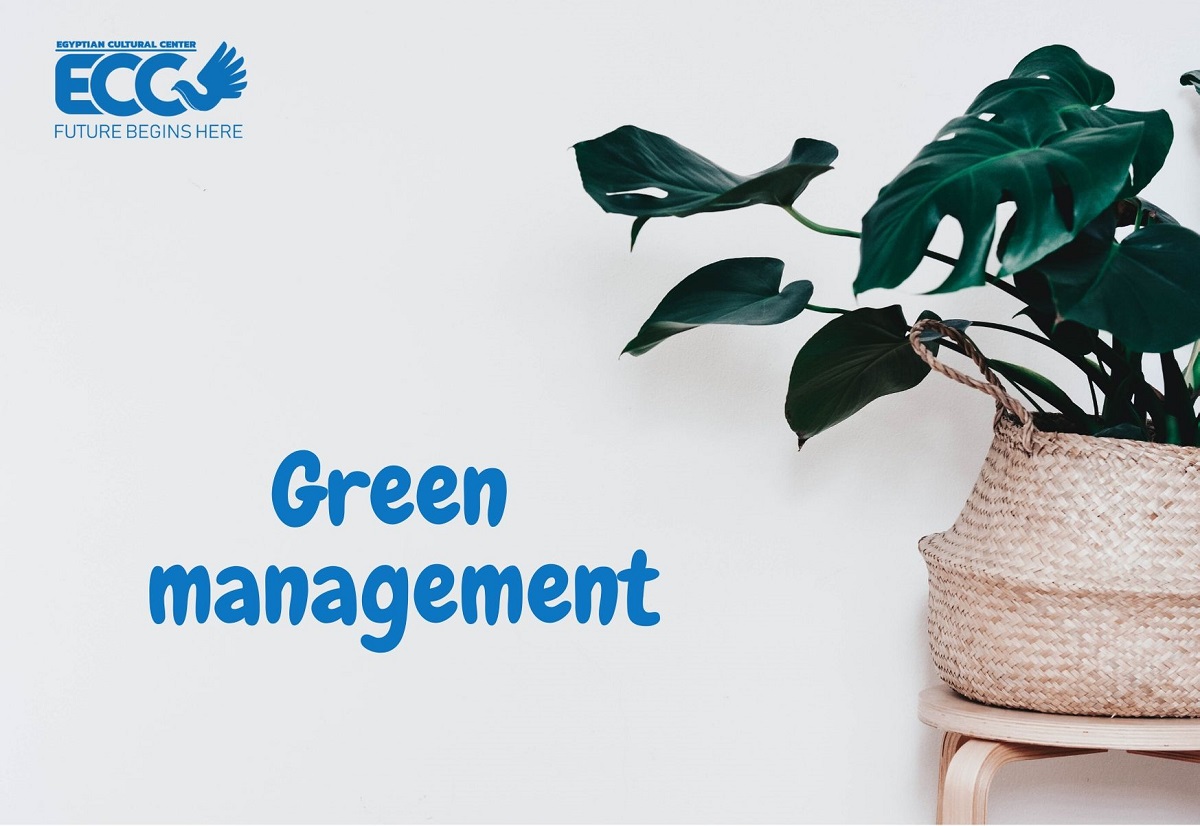Many industries are applying the concept of sustainable management and eco-friendly practices due to the international awareness of the necessity of serving the society while succeeding in business.
The term “green companies, restaurants and hotels” describes any organization or hotel that strives to be more environmentally friendly through the efficient use of energy, water, and materials while providing quality services. Green hotels conserve and preserve by saving water, reducing energy use, and reducing solid waste.
If we will concentrate on the tourism and accommodation industry we will find that they have seen benefits such as reduced costs and liabilities, high return and low-risk investments, increased profits, and positive cash flows. Identifying these benefits and incentives has allowed the popularity of green hotels to grow internationally.
Widespread interest in waste reduction has compelled many businesses to present a “green” image to the public that is, to demonstrate that they are environmentally responsible. For example, hotels are discovering that their environmentally responsible practices can attract convention and conference business (MICE) increasingly; food service managers are choosing to recover and reuse food scraps and other organic materials instead of throwing them away.
There was a publication developed to assist businesses and institutions with food recovery and waste reduction efforts. Businesses that could benefit include restaurants, bakeries, grocery stores, caterers, food distributors, and vendors, produce markets, food processing plants, and businesses or institutions operating a cafeteria, such as hospitals, prisons, old people’s homes, colleges or schools, hotels, and resorts. Food recovery methods discussed include donating edible food to donor programs, giving food scraps to local livestock farmers, and composting.
Reducing food waste in general, has economic benefits, including Reducing pollution and the consumption of non- renewable materials within a community.
Reducing trash collection and disposal fees for individuals and businesses. Ensuring that edible food is redistributed to those who require emergency food provision.
Waste is generally thought of as something that is no more desired by the primordial customer. It is described in UK legislation as: any material which forms a scrap material or effluent or other unwanted surplus material arising from the administration of any method. According to Brennan, (2006), any substance or article which requires to be disposed of as being broken, worn out, contaminated or otherwise spoiled, or that the holder discards, intends to or is required to discard.
Types of waste
There are different patterns of wastes that can be divided into solid, liquid, and gaseous wastes (Brennan, 2006).
Solid Wastes
Solid wastes are the output of food processing plants and that may include: the unnecessary leftover from the primary processing operations, leftovers which are available as an integral part of taking the wastes resulting from dealing with inefficiencies, slushes are produced via the treatment of the wastewater, containers for the raw materials and accomplished outcomes. In general, solid wastes are poorly characterized both in terms of quality and quantity, and estimates of solid wastes are usually inferred from mass balances. Solid wastes in hotels have many fragments, comprising paper, food, different metals, and non-metals, plastics, aluminum, and glass.
According to Alexander (2002), from 1991-1993 the hotel waste consisted of 46% food waste, 25.3% paper, 11.7% cardboard, 6.7% plastics, 5.6% glass, and 4.5% metals. This gives a picture of the variety of waste that can be produced by only a small number of hotels in a city. When looked at with a zero-waste attitude, these figures show the opportunities for both resource recovery and waste reduction. Implementing a solid waste reduction program in a hotel can create significant cost savings in waste hauling fees while creating a more environmentally friendly hotel. This is especially true as solid waste becomes a more significant environmental issue and landfill fees increase. Hotels have long been hesitated to establish programs in solid waste dealing due to the highly-required coordination and cooperation among management, employees, and guests. Most hotels however now have their own practices such waste-reducing steps as purchasing recycled-content products, providing environmental education to their employees, donating their excess food to local food banks, and recycling paper, aluminum, and plastics (Alexander, 2002).
Liquid Wastes
Liquid waste includes wastewater which is used as a coolant, in washing and cleaning equipment.
Water-efficient practices use improved technologies that deliver equal or better service using less water. Water conservation encourages hotels to better manage how and when water is being used, addressing both the technical and human side of water management issues. It is estimated that by 2010, water use will increase to approximately 475 gallons per day for each room in high luxury facilities.
In other accommodation, water use is still a cost and important stress on the local environment. In many cases, water conservation can be a matter of purchasing and using proper systems and tools. Choose products that have standardized replaceable components for the best long-term performance. Factors to include when considering water sources may include renewability, potential impacts on the environment and water supplies as well as the economic benefit. In many developing countries hotel water use may impact the water supplies of the local people.
Identifying where water use is excessive is important to luxury hotels and hotels in developing areas. In one case a study completed on tourism in Palawan, Philippines, it was estimated that in the early stages of tourism development in Busuanga West, the amount of water required for a single high-standard hotel-room would be 396 gallons per day.
This was enough water to support 14 local people at their current standard of living. Low-flow showerheads and faucet aerators are some options for water conservation, which are becoming common among hotel facilities. The payback period for their use can be 3-4 years depending on the extent of the project (Alexander, 2002).
In many water assessments, urinals and automatic flushing toilets are found to consume a great deal of water. The THC Rotorua Hotel in New Zealand had urinals that flushed automatically every nine minutes. Each flush used 10 liters of water. This added up to 66 liters per hour, or 1,580 liters per day, regardless of whether the urinals had been used or not. The total consumption for the three urinals was 4,740 daily. The hotel then installed detectors that sense when the urinals are being used and allow flushing to occur at a specified time after use. This program reduced water consumption in the three urinals from 66 liters per hour to 40 liters during the day and 20 liters in the evening.
In addition to installing the urinal sensors, the hotel installed low-flow showerheads at a cost of $3,060. The annual cost savings for the water conservation came to $5,244, with a payback of only seven months. As toilets and urinals are being recognized as high consumers of water, options are becoming available that have lower flush volumes, and systems are being introduced that separate solid from the fluids.
Another target for hotels is water consumption in washing machines and air-cooling systems. The Saunders Hotel Group, for example, had to reduce water use due to high water rates and use Restrictions. The hotel group’s S.H.I.N.E. program annually saves four million gallons of drinking water. They installed new and efficient laundry systems, switched from water-cooled to air-cooled ice machines, and eliminated water-cooled air conditioning equipment. These projects saved the hotel 1.5 million gallons of water annually.
Gaseous Wastes
Emissions of gases include solvent vapors e.g. Violate organic emissions and gases discharged by the combustion of fuels. It is necessary to notice that solid wastes contain considerable proportion that hotels worldwide are recollecting chances to tool energy-efficient projects in space heating and cooling systems (Brennan, 2006).
On the other hand, some hotel and Towers realized that the daily washing for every piece liable to be washed consumes an account of 35% of the energy consumed in the laundry process while drying consumed 65%. Simply when a hotel had to change the temperature of the wash that saved a sum of $2,000 in the first three months.
Lighting is the second which is the largest energy-using system in a hotel, which costs a lot. Fluorescent lamps produce four times as much light per watt than in white hot-glowing lamps, and those fluorescent lamps can last eight to ten times longer (Alexander, 2002).
Solar power is being recognized more and more commonly as a limitless natural resource with economic and environmental benefits. In contrast, gas and oil are non-renewable resources and contribute to emissions of greenhouse gases. Today solar power is being harnessed in many new systems providing thermal and light power to Hotels in innovative ways.
For example, the Sanga Saby Hotel in Sweden installed solar panels on the roof of the sauna area, which supplements heat for the pool and sauna. These natural powers supplies are becoming a popular means of saving energy, consequently money. One of the most common ways of harnessing solar power is to use photovoltaic panels. Photovoltaic assists facilities in getting off the power grid, with the resulting decrease in both utility costs and vulnerability to market fluctuations in energy prices (Alexander, 2002).
Renewable energy systems should be promoted and energy-saving installations and systems should be used whenever possible (requirement, key systems, central switches). Also, local power stations must be localized and designed in a way to minimize air pollution, vibration, and noise. It must be ensured that the discharge of cooling water does not affect the environment (Alexander, 2002).
Drivers of pollution prevention include:
COST SAVING: Reducing the number of raw materials, energy, production, operating, and disposal costs will increase a company’s bottom line.
HEALTH: Pollution prevention reduces risks to human health and safety as well as occupational and community exposure.
LIABILITY: Pollution prevention reduces the potential liability for environmental problems and reduces insurance needs.
ENVIRONMENTAL: Pollution prevention protects the environment and conservation of our natural resources while saving the company money.
PUBLIC IMAGE: Pollution prevention enhances a company’s public image by taking a proactive approach to environmental protection (James M., 1998).






Leave A Comment